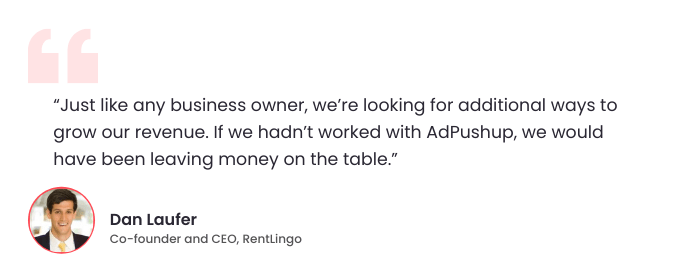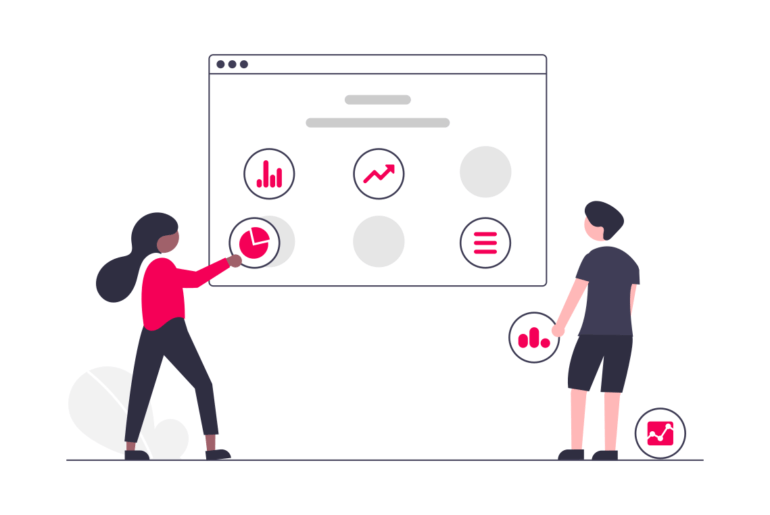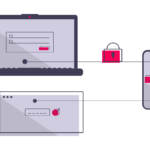Feeling overwhelmed by online ad metrics like CPC vs CPM, and how do other metrics like CPA, CTR, etc differ? Let us break down these terms, and compare one another, so you can choose the right advertising model and dominate your campaigns.
Publishers and advertisers surely have a lot to learn to excel in the ever-evolving advertising industry. An important aspect here is to learn the digital marketing metrics. We often hear the question, “Which one should I use?”
Before answering that, let’s define what each of these cost models means. If you’re looking for what differentiates all the advertising pricing models, you’ve come to the right place.
By the end of this write-up, you’ll be able to develop a deep understanding of crucial advertising metrics such as CPM, CPC, CPA, CTR, CPV, CPI, and CPL.
Let’s first understand what CPC is.
What is CPC (Cost Per Click)?
CPC stands for “Cost Per Click.” In this model, you pay a set amount every time your ad is clicked. For example, if you were paying $0.40 per click, and your ad is clicked 1,500 times, you would pay the ad network $600 total for your ad. If fewer people click your ad, you will pay less.
Let’s take a look at this the other way.
For example, if an ad is clicked two times and each click has a price of $1, the total CPC would be $2. It’s that simple!
What is CPM (Cost Per Mile)?
CPM stands for “Cost Per Mille”. “Mille” refers to every 1,000 ad impressions. With this model, you pay a set amount for an ad network to serve up your ad 1,000 times. This price point is unaffected whether people click through to your website or not.
The pricing metric helps you calculate the amount required to show an ad a thousand times on a specific website.
To calculate it, you just have to divide your expenditure by the number of impressions. So, if your spend is $1000, CPM for 50,000 impressions would be 1000/50000 x 1000 = $20.
CPA (Cost Per Acquisition)
CPA or Cost Per Acquisition is another pricing metric where an advertiser only pays when the user completes an action. It could be making a purchase, buying a subscription, or signing up for a free trial.
This would come up as a risk for the publisher as they’ll only get paid if the user takes an action from the ad instead of just clicking it or watching it. It is also called affiliate advertising and was used widely in the mid-2000s.

CTR (Click Through Rate)
As CPM, CPC, and CPA specify the cost you need for online advertising, CTR or Click Through Rate is the metric that analyzes the effectiveness of an advertising campaign as it gives the exact number of people who actually click the ad and visit the website linked.
To calculate CTR, you need to divide the number of users who clicked the ad by the number of times the ad was shown and multiply it by 100.
CPV (Cost Per Single View)
CPV, or cost per single view, is a subcategory of CPA. As CPA shows the cost of any action taken on a specific ad, CPV shows the cost earned for each view.
For CPA, you can take account of any ad format you need for advertising, but when it comes to CPV, a user must watch a video or pop-up ad to complete the process.

These ads are hosted on video platforms such as YouTube or Vimeo, where they’re showcased to users based on various factors including advertiser-set targeting options. Users who watch a predetermined portion of the ad, often around 30 seconds or the entire duration if shorter, prompt the platform to charge the advertiser the bid amount, adjusting as per the auction system.
CPI (Cost Per Install)
CPI or cost per install is the fixed rate paid by the advertiser only if the user installs the application through the ad shown. It is often used for mobile apps and by most marketers who need to measure their campaign performance.
CPL (Cost Per Lead)
CPL, or cost per lead, is another sub-category of CPA that shows the amount paid by an advertiser only when a lead is generated with the help of the ad shown.
The pricing metric is widely preferred in e-commerce when sellers need to measure the data from potential customers when they’re selling items or subscriptions.
Delving a bit deeper into advertising metrics, we’ll now explore the basic differences and compare the terms to gain better clarity in optimizing an advertising strategy.
Let’s first take a look at CPC vs CPM in detail since they are among the most common advertising metrics used in the advertising world. Then, we can breeze through the rest of the common metrics for a quick comparison.
CPC vs CPM
To understand CPC vs CPM, let’s have a quick recap on their definitions.
- CPC (Cost Per Click): you pay when someone clicks on your ad.
- CPM (Cost Per Thousand Impressions): you pay based on how many people see your ads.
The CPM model is totally different from CPC as your bidding is focused and charged on the number of ad impressions your advert receives rather than the number of clicks. CPM bidding is charged per thousand impressions your ad receives.
Here’s a quick visual breaking down CPC vs CPM:

Now that we have understood CPC vs CPM, let’s have a look at CPC vs CPA.
CPC vs CPA
CPA suits the brand marketers working through the affiliate business model, but publishers hesitate to go with this one, as they’re not ready to take any risks and wait for the conversion.
On the other hand, CPC is a much more viable option for publishers, as the user only has to click the specific ad rather than make a purchase or buy a subscription.
CPC vs CTR
CPC indicates the amount an advertiser will pay on the basis of getting clicks on a specific ad, and CTR counts both the clicks on the ad and how many people are viewing it.
Moreover, CTR is more effective than CPC when it comes to determining the success of a marketing campaign and how many organic users are driven towards a page or ad.
CPC vs CPV
CPC includes all kinds of ads to analyze the number of clicks. But, CPV, which is, cost per view, refers only to the amount an advertiser needs to pay when a user watches a video ad.
CPM vs CPV
CPM is the advertising cost calculated per thousand ad impressions, but CPV is the cost earned when only one video ad is viewed.
The former is excellent for raising brand awareness, and the latter is mostly used for mobile apps.
CPV vs CPA
As CPV is based on the views on a specific video ad, CPA can be calculated for several ad formats. Choosing between the two marketing metrics can depend on a few factors, like the type of online ad, choice of advertising platform, and more.
CPA vs CPM
The only difference between CPA and CPM is, that CPA is dependent on the user’s action, and it will go in vain if the user fails to convert. However, when it comes to CPM, a publisher just has to show the ad impressions rather than conversions to get paid.
CPM vs CPI
CPM is the cost incurred for a thousand ad impressions, but CPI relies on the installation through the advertisement. CPM is mostly used in ad marketing campaigns by all types of publishers, but CPI is only favoured by app developers who want users to download and install a particular app or software program.
CPC vs CPI
CPC relies heavily on click-through rate (CTR) and is based on the number of clicks on an ad. CPI is just dependent on the program installation and has nothing to do with any other ad metric.
CPI vs CPA
As mentioned earlier, CPI is only based on the number of installs. On the other hand, CPA is dependent on the action taken by the user.
So, when both metrics are compared, CPA comes out to be the better key performance indicator as it is more effective in capturing the intricacies of the free-to-play and freemium markets.
CPA vs CPL
To understand the difference, CPL is a type of CPA and will only count when a lead is generated. While CPA is better as publishers need to acquire customers from their ads, CPL is preferred more within the e-commerce sphere.
CPL vs CPM
The only major difference between CPM and CPL is that the former gets the top position on the marketing funnel when it comes to raising brand awareness, but the latter comes somewhere in the middle.
Also, the ad format is the least concern for a publisher when it comes to CPM, but publishers have to give a thorough thought to ad formats when it comes to CPL.
CPC vs CPL
The basic difference between CPC and CPL is the way advertisers are charged for their campaigns. In the case of CPC, one click is enough to get paid, but when it’s CPL, the advertiser will only pay when the lead is generated.
CTR vs CPA
CPA comes out to be a better advertising metric than CPA to analyze the ad budget. Moreover, CTR provides insights into ad performance and engagement and CPA is the cost incurred by the advertiser to acquire a customer or generate a specific action.
Final Thoughts
To summarise, all bidding strategies are different, but they all have their own benefits and drawbacks. They can be used for different campaign goals, such as driving traffic to your site, driving brand awareness, or getting sales for your retail business.
For a publisher, choosing the right pricing method depends upon a lot of factors that may depend upon the type of audience, the ad campaign’s goal, or anything else.
Not to forget that, each pricing model has its own pros and cons. For example, CPC may offer more returns than other metrics, but the number of clicks on which it depends can’t be predicted.
Moreover, different types of metrics suit different type of sites. For example, websites with a lot of organic traffic prefer CPC, but the website focused more towards the content prefer CPM.
Do you want greater ad revenue, more flexibility, diversified income, and better support? That’s why we’re here. Optimize your ad revenue by up to 40% with us.
FAQs: CPC vs CPM and more
When you want to calculate CPM, you’ll work on the cost per 1,000 impressions basis. Here, you’ll simply charge advertisers a flat fee for every 1,000 times their ad is shown.
For example, let’s say you charge an advertiser $5 per 1,000 impressions. Regardless of how many clicks the ad gets, with 10,000 impressions, the advertiser will pay you $50.
When you use CPC, an advertiser will pay you every time someone clicks on their ad (which is displayed on your site). This model differs from CPM in that the advertiser will set a budget and the maximum amount that they’re willing to pay for a click. This is their bid.
An ad network like Google Adsense then compares their bid to the bids of other advertisers, and if their bid is competitive, the ad network will show their ad until their complete budget is used up.
Ad exchanges allow billions of impressions to be bought and sold in real time using an auction process. As such, the buying and selling process is based on bidding.
Publishers can set the prices they’ll accept for each impression. They can also set the criteria for the types of impressions that they want to buy and sell.
Advertisers then bid on these impressions and compete with one another for every impression. As a result, the auction drives up the price of the ad space.
The only difference between CPM, CPC, and CPV is how the advertiser will pay for the platform. For CPM, the advertiser will pay for every 1000 impressions generated, for CPC, for every click made, and for CPV, every time the video ad is watched.
In AdSense, the difference between CPM (Cost Per Mille) and CPC (Cost Per Click) lies in how advertisers are charged and how publishers earn revenue.
No, CPM is the cost earned per 1,000 views, and CPA is the cost earned on each user action.

Deepak has a keen eye for detail and a deep understanding of the ad tech landscape. Whether it’s through in-depth articles, thought-provoking insights, or compelling storytelling, he’s dedicated to helping people navigate the complex world of ad tech with the simplicity of his words.








